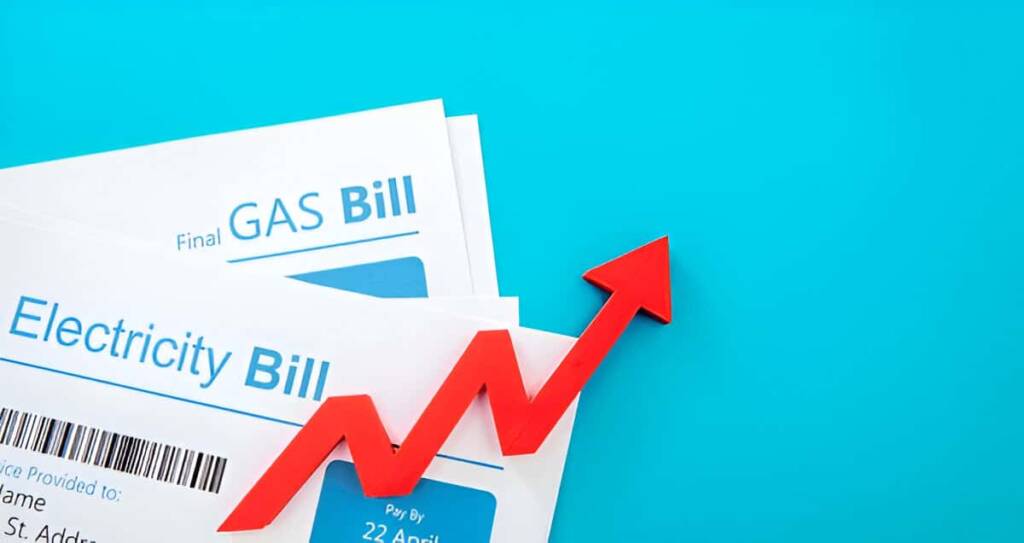The Pakistan Electricity charges are now a big burden for a lot of people. Cost of living costs going up and rising electricity bills are adding yet another pressure to family’s livelihood already struggling to survive. It is common concern now a days that how to cover the cost of energy bills in monthly installments when prices are going up.
In this electricity crisis is people are consuming less and paying more, due to load shading electricity is not available to use but energy bill cost is more than what people has paid in corresponding month of previous
It is becoming very hard to meet livelihood it is utmost requirement of people that government should address the problem and of these rising prices. From economic challenges to infrastructural issues, several factors are at play here.
Let’s delve into the complexities behind this issue and explore its impact on everyday citizens while discussing potential solutions that can bring relief amid this growing challenge.
Factors contributing to the increase in electricity prices
Several factors are driving the increase in electricity prices in Pakistan. One major contributor is the rising cost of fuel. As global oil prices fluctuate, local power generation costs inevitably rise.
Infrastructure issues also play a critical role. Aging power plants and outdated transmission systems lead to inefficiencies, causing higher operational costs to be passed on to consumers.
Additionally, government policies can influence pricing structures. Regulatory changes often result in adjustments that affect tariffs and directly impact household electricity bills.
Electricity bills in Pakistan are skyrocketing, putting a massive strain on households already struggling with inflation. With rising tariffs and unpredictable surcharges, many are questioning the sustainability of this burden. It’s crucial for authorities to prioritize affordable energy solutions and improve efficiency to ease the public’s financial stress.
Voice of Public
Moreover, electricity demand continues to surge due to population growth and urbanization. This escalating demand outpaces supply capabilities, pushing prices even higher.
Currency depreciation adds another layer of complexity. A weaker rupee means importing raw materials for energy production becomes more expensive, ultimately affecting end-user rates.

Hike of Electricity Bills.
The electricity rates hike in every month and also depend on bimonthly fuel adjustment prices with reflet in electricity bill, now it is becoming unbearable in Pakistan that not many families are able to afford it. As prices climb, the family has to make a decision between needs and energy.
Families often cut back on essential items like food and healthcare to keep the lights on. This has created a sense of anxiety and uncertainty among citizens while pay off their electricity bills.
Small businesses are becoming uncompetitive in local market as compare to foreign imported good it makes significant challenges as operational costs increase. Many entrepreneurs are forced to raise prices or shut down due to unsustainable overhead expenses.
The burden falls disproportionately on lower-income groups, exacerbating existing resource access inequalities. The emotional toll is evident—stress levels rise as people grapple with financial instability.
With energy becoming a luxury rather than a necessity for some, community discussions around sustainability and alternative sources are gaining momentum across various segments of society.
Government initiatives and policies
The government of Pakistan has recognized the prevailing issue of rising electricity bills prices and is working to implement various initiatives.
One significant step has been the introduction of subsidies aimed at lower-income households. These financial aids are designed to soften the blow of increasing tariffs but is very less effort because their other measures and conflicting with it.
Meanwhile, policies supporting renewable energy have also taken off. In developing solar, wind and hydroelectric plants, the government is looking to diversify its energy supply and limit its reliance on expensive fossil fuels.
Also in the works is infrastructure upgrade for power distribution networks so that losses during transmission are reduced. This could stabilize costs for consumers in the long run.
Strengthening regulatory bodies is also part of their strategy. Enhanced oversight can ensure fair pricing practices among utility companies while safeguarding consumer rights against unjust hikes in tariff rates.

Alternative energy sources for reducing electricity costs
Exploring alternative energy sources like solar panels and wind energy are promising solution to the rising electricity costs in Pakistan. Solar power stands out as one of the most accessible options. With abundant sunlight, residential solar panels can significantly reduce dependence on conventional grids.
Wind energy also offers great potential, particularly in coastal and hilly areas. Wind turbines can harness natural breezes to generate clean electricity, lowering bills sustainably.
Biogas is another innovative approach. Utilizing organic waste for energy production reduces costs and addresses waste management issues.
Investment in renewable sources is highly profitable and environment friendly, it’s not only money that saves but good for environment. Citizens who move away from fossil fuels can participate in addressing climate change while also saving on utilities.
Incentives offered by the government may encourage the use of such alternatives further so that they can be accessible and cost-effective to Pakistani households.
Advice to save electricity at home.
The electricity bills in your home don’t have to be a complete chore. A few changes can save you tons of money on your utility bills.
– At first, get the appliances on the energy saving track. Look for products marked Energy Star; they are power-saver but still very fast.
Next, consider your lighting choices. Switch from incandescent to LED bulbs. They last longer and use less electricity.
Using natural light is another effective strategy. Keep open your curtains in the daytime instead of wasting your money on energy bills.
Reminder to unplug things when not in use. Almost everything keeps eating power even when it’s turned off “phantom load”.
Additionally, monitor your thermostat settings. Lowering it just a few degrees in winter or raising it slightly in summer can make a noticeable difference over time.
Conduct an energy audit of your home to identify areas where you may improve efficiency further. Little adjustments add up quickly!
Conclusion and call to action for government and citizens
Electricity bills are getting expensive in Pakistan and the government and the people are facing a real problem. As prices rise, it’s going to get even more urgent for policymakers to do something. Good policies focusing on affordable energy access can help lighten the load on families who cannot keep up with costs.
It’s also up to citizens to take a lead by converting their own homes to be energy efficient and demand change in their neighborhoods. Homeowners can decrease their dependency on standard electricity grids and make the environment a cleaner place by seeking out renewable energy sources such as solar or wind power.
State and people have to cooperate to solve this crisis. Together they can push forward with new ideas that will stabilize electricity prices and provide a better future for all Pakistanis. Access to affordable electricity should be a collective aim in this difficult period we share.



1 Comment
james hilton
Electricity prices in Pakistan are becoming harder to bear for many families. With inflation and high energy costs, people must find relief and practical solutions. Along with energy-saving habits and exploring solar power, checking your monthly bills regularly can help manage usage. You can easily check your electricity bill online at https://emepcobill.pk/ — a quick and helpful way to stay updated and plan.